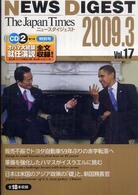Full Description
Rapid urbanization of economic zones in China has resulted in a special social phenomenon: "villages-in-the-city." Underdeveloped villages are absorbed during the expansion of urban areas, while retaining their rustic characteristics. Due to the rural characteristics of these areas, social security is much lower compared with the urbanized city. This book uses Tang Village, a remote area in the Shenzhen Special Economic Zone, as an example to establish a comprehensive analytical framework by integrating existing crime theories in analyzing villages-in-the-city. The analysis covers the community, individual, and macro levels to detail the diverse social and behavioral factors causing crime at multiple levels. First, a brief history of the urbanization process of Tang Village is provided to establish how urban planning contributed to the issues in the village today. The authors go on to explain how socially disorganized communities dictate the crime hotspots and the common types of crime. The book examines other risk factors that may contribute to the level of crime such as weak social controls, building density, and floating populations of poor working-class migrants. The routine activities of victims, offenders, and guardians are examined. The book concludes with the current trends in the social structure within the villages-in-the-city and their expected outcome after urbanization.
Contents
List of Tables
List of Figures
Chapter 1 Introduction
Chapter 2 Crimes in Tang Village
Chapter 3 Individual, Community and Macro Levels of Analysis
Chapter 4 Community Disorganization in Tang Village
Chapter 5 Suitable Targets of Crime
Chapter 6 Motivated Offenders
Chapter 7 Incapability of Guardians
Chapter 8 Political Economy and Crime in Tang Village
Chapter 9 Conclusions
References
Appendix: The Main Interviewees
Index







